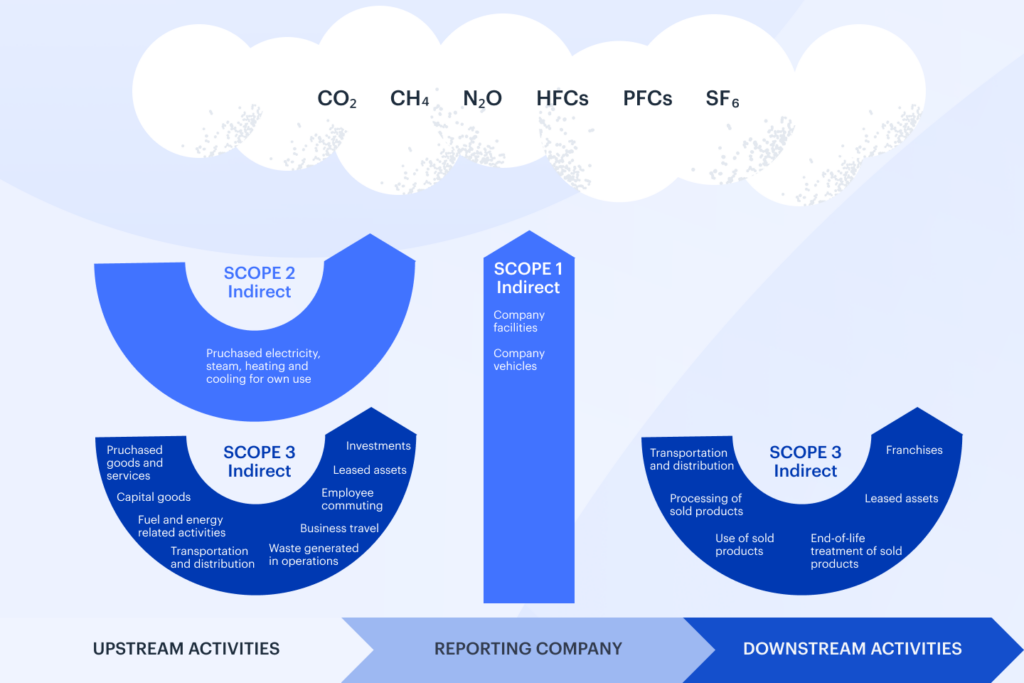How to create a sustainable travel policy
With environmental issues becoming increasingly grave, the public is deservedly placing businesses' sustainability efforts under the spotlight. Organizations who tackle their carbon footprint head-on will win themselves new fans, while those who overlook this vital corporate responsibility could find their company name suffering.
As travel is one of the main sources of global carbon emissions, reducing the environmental impact of your corporate travel is a fantastic way to start shaping a more sustainable business. Setting a few boundaries for your business travel can help your teams make greener choices and support sustainability managers in their quest to minimize emissions.
A sustainable travel policy is a valuable tool to help reduce your travel-related carbon emissions and reach your broader sustainability goals. With so many tools available, it's never been easier to craft a policy that can have a long-lasting impact on your sustainability journey.
TravelPerk's sustainable travel policy template helps large or small businesses to write and publish a policy. The template will help you to
- Outline the key actions to reduce your company’s travel emissions
- Offer employees sustainable travel alternatives
- Walkaway with a policy to integrate into your large sustainability strategy
Download the template and use it to develop a sustainable travel policy within your company.

Why does a company need a sustainable travel policy?
A sustainable travel policy is needed because Scope 3 emissions, or the indirect CO2 emissions from activities like travel, account for 70% of a business’ carbon footprint. A sustainable travel policy provides your employees with the support and tools needed to carry out their responsibilties in reducing a carbon footprint.Sustainability has three primary components—environmental, social, and economical. Since the carbon emissions from travel are a primary impact on the environment, reducing emissions has become the focus of most travel policies.

Businesses are already tackling direct Scope 1 and 2 emissions, but Scope 3 emissions, which cover business travel, aren’t often covered in ESG (environmental, social, and governance) reports. Since these indirect sources can make up to 70 percent of a company's emissions, they must be reduced to meet net-zero ambitions.
The social aspects of travel shouldn’t be ignored either. To ensure alignment with wider ESG goals be fully ESG compliant, companies should consider the well-being of employees and their contribution to the local economy.
In this sustainable travel policy template, you will find the basic building blocks for your company's internal sustainable travel policy.
How to establish a successful sustainable travel policy
Setting up a sustainable travel policy can be done in mere minutes. But to really make a difference to your carbon emissions, it pays to do a little investigation. By establishing your current carbon footprint and analyzing your biggest contributions, you can assign policies that are more relevant to your business activities. After following these steps, you can also set more precise goals with metrics to measure your progress and motivate your teams.
Step 1. Calculate your current carbon emissions
As we alluded to above, the first step to setting meaningful sustainability goals is to figure out the volume of your current carbon emissions. If your organization has a sustainability manager in-house, they may have conducted a comprehensive audit of your carbon footprint.
But if you are starting from scratch, there are tools your travel manager can use to gauge the emissions from your corporate travel. Your travel management company may offer carbon auditing as an additional service, or an online booking tool like TravelPerk can make generating carbon reports a breeze with GreenPerk. After accurately assessing your carbon footprint, you can set smarter strategies for reducing it.
How to easily measure carbon emissions with GreenPerk
When you book your business travel with TravelPerk, as well as the option to offset your carbon footprint with GreenPerk, our platform allows you to easily breakdown your carbon footprint with our customized reporting tools. Giving your team actionable insights to help you continue to do your bit for the planet.
Step 2. Evaluate your findings
Analyzing your current carbon footprint can help you project the volume of your future emissions and create more realistic strategies for your sustainable travel policy. Start by highlighting the routes that contribute the most to your CO2 emissions.
Investigate if these destinations could be changed for more sustainable options and use them as a guide to set more realistic targets for your emissions. Be sure to include cost parameters into your analysis to ensure that any suggested sustainability strategy remains cost-effective.
Growing businesses might find it easier to focus on efficiency over emissions. Determining a goal on carbon emissions per kilometer or per employee can help get the ball rolling while organizations build up to bigger changes.
Step 3: Set straightforward strategies
After evaluating your primary CO2 emissions, establish some simple strategies for your teams to implement. These will form your sustainable travel policy, so they need to be easy to action. Some examples of sustainability practices you could include are;
- Making it compulsory to pick rail journeys over air travel when itineraries are under a specific duration.
- If business travelers do need to fly, ensure they travel direct as much as possible.
- Ask travelers to identify which airlines use newer planes on their long-haul routes.
- Identify airlines that are procuring new technologies such as biofuels or investing in their own carbon offsetting programs. Establish a list of preferred airlines based on the extent they engage with sustainable business practices like these. Ensure it is clear that to remain compliant with your sustainability program, employees should use these airlines wherever possible.
- Encourage employees to use public transport and opt for a hybrid or electric vehicle when hiring a car or taking a taxi.
After writing up your sustainability travel policy, make sure you monitor how your teams get on with these new strategies. Change won't happen overnight, but with the right environmental policies, you should see continual improvement as sustainability becomes embedded in your company's core values.
If you do not see your carbon emissions come down, you likely need to take a new approach either in the policies themselves or how you motivate your teams to go green.
Step 4. Offset your remaining carbon emissions
Unfortunately, as hard as we try to reduce, recycle, and reuse, we can't avoid all carbon emissions. This is where selecting a carbon offsetting program can help mitigate any negative impact on environmental sustainability.
With tonnes of fantastic options out there, companies can choose partnerships that protect vulnerable ecosystems, invest in renewable energy, and have a positive social impact. But finding a carbon offsetting program that contributes to tackling climate change in meaningful ways is crucial to avoid accusations of greenwashing.
At TravelPerk, we help businesses turn their carbon emissions into positive change with our GreenPerk offsetting service. From protecting primary rainforests to investing in green energy, the projects we select are accredited by environmental experts VERRA and reduce carbon emissions by almost 2 million tonnes each year.
For more tips on picking a carbon offsetting solution for your business, check out our guide, including our top 8 recommendations for the best programs available.
How can you get teams on board with your sustainable travel policy?
Determining a strategy for your sustainability policy is just the first step to successfully implementing change. Communicating your company's sustainability stance in a clear and engaging way is the key to instigating long-term gains. So, what techniques can you use to help your teams adapt to new eco-friendly protocols?
Communicate with clear guidelines
How you share your environmentally friendly intentions is vital. While it's important to be transparent, avoid getting too bogged down in numbers and bamboozling teams with the complexity of carbon rates. Instead, to empower employees, opt for straightforward goals and the practical steps you outlined earlier.
Take advantage of technology
In the past, corporate travel policies were often relegated to the recesses of email inboxes or shared drives. But technology is making it much easier for travel managers to improve compliance and give business travelers some autonomy over their arrangements.
Using an online tool like TravelPerk can help businesses incorporate their travel policy into the booking process. In just a few minutes, travel managers can set parameters so corporate travelers can choose from options that are compliant with the company's travel policy.
Any itineraries that fall within the policy's scope are automatically approved, while managers receive notifications for any that require additional authorization. Plus, with a system like GreenPerk, business travelers can see the differing carbon emissions for their choices, making it easier to pick more eco-friendly arrangements.
If you would like to see how a travel management system like TravelPerk can help your business travelers stay compliant while finding travel arrangements that meet their own needs, sign up for a demonstration with one of our friendly team members today.
Inspire with incentives
Generating excitement around new sustainability initiatives is the key to hitting your carbon emission goals. Creating some friendly competition between departments can help inspire employees and get them on board with new policies.
Offering a bonus or a perk can be a great way to incentivize change. But whether you pick the team that makes the most significant reduction or the department that hits their target the fastest, you need to ensure everyone has a fair chance at winning for it to be a motivating move. A better method could be to rank or score each of your business trips for their sustainability performance and reward employees who make the greenest choices.
Offer opportunities for feedback
A corporate sustainability policy is only successful if it's open for review, so be sure to set time aside to revaluate your sustainable travel policy. Companies using online tools like TravelPerk can see their progress with just a few clicks. But as well as generating carbon emission reports, make time to gather comments from your stakeholders to find out which policies they find easy to follow and if there are any that require further thought.
If you have a weekly all-hands meeting, use it as an opportunity to make an event of updating everyone on your progress. Decide beforehand whether you need to tweak your travel policy and use the occasion to announce any changes.
Hopefully, you will be able to celebrate some major wins, but if you still have a way to go, don't worry. Focusing on metrics that show how far you've come can get people excited about the positive changes you are making. If you have run an incentive, make a big deal of awarding your winning teams to build a buzz around sustainability around the office.
If you would like to create a more sustainable future for your business, check out our guide to greener corporate travel for more eco-friendly initiatives.


